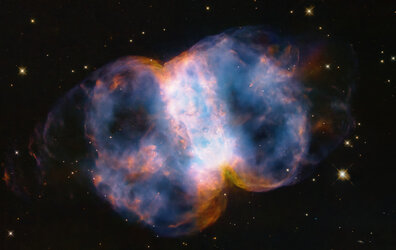Accept all cookies Accept only essential cookies See our Cookie Notice

About ESA
The European Space Agency (ESA) is Europe’s gateway to space. Its mission is to shape the development of Europe’s space capability and ensure that investment in space continues to deliver benefits to the citizens of Europe and the world.
Highlights
ESA - United space in Europe
This is ESA ESA facts Member States & Cooperating States Funding Director General Top management For Member State Delegations European vision European Space Policy ESA & EU Space Councils Responsibility & Sustainability Annual Report Calendar of meetings Corporate newsEstablishments & sites
ESA Headquarters ESA ESTEC ESA ESOC ESA ESRIN ESA EAC ESA ESAC Europe's Spaceport ESA ESEC ESA ECSAT Brussels Office Washington OfficeWorking with ESA
Business with ESA ESA Commercialisation Gateway Law at ESA Careers Cyber resilience at ESA IT at ESA Newsroom Partnerships Merchandising Licence Education Open Space Innovation Platform Integrity and Reporting Administrative Tribunal Health and SafetyMore about ESA
History ESA Historical Archives Exhibitions Publications Art & Culture ESA Merchandise Kids Diversity ESA Brand Centre ESA ChampionsLatest
Space in Member States
Find out more about space activities in our 23 Member States, and understand how ESA works together with their national agencies, institutions and organisations.
Science & Exploration
Exploring our Solar System and unlocking the secrets of the Universe
Go to topicAstronauts
Missions
Juice Euclid Webb Solar Orbiter BepiColombo Gaia ExoMars Cheops Exoplanet missions More missionsActivities
International Space Station Orion service module Gateway Concordia Caves & Pangaea BenefitsLatest
Space Safety
Protecting life and infrastructure on Earth and in orbit
Go to topicAsteroids
Asteroids and Planetary Defence Asteroid danger explained Flyeye telescope: asteroid detection Hera mission: asteroid deflection Near-Earth Object Coordination CentreSpace junk
About space debris Space debris by the numbers Space Environment Report In space refuelling, refurbishing and removingSafety from space
Clean Space ecodesign Zero Debris Technologies Space for Earth Supporting Sustainable DevelopmentApplications
Using space to benefit citizens and meet future challenges on Earth
Go to topicObserving the Earth
Observing the Earth Future EO Copernicus Meteorology Space for our climate Satellite missionsCommercialisation
ESA Commercialisation Gateway Open Space Innovation Platform Business Incubation ESA Space SolutionsLatest
Enabling & Support
Making space accessible and developing the technologies for the future
Go to topicBuilding missions
Space Engineering and Technology Test centre Laboratories Concurrent Design Facility Preparing for the future Shaping the Future Discovery and Preparation Advanced Concepts TeamSpace transportation
Space Transportation Ariane Vega Space Rider Future space transportation Boost! Europe's Spaceport Launches from Europe's Spaceport from 2012Latest

Symbiotic star Mira HM Sge
Thank you for liking
You have already liked this page, you can only like it once!
This is a NASA/ESA Hubble Space Telescope image of the symbiotic star Mira HM Sge. Located 3,400 light-years away in the constellation Sagitta, it consists of a red giant and a white dwarf companion. The stars are too close together to be resolved by Hubble. Material bleeds off the red giant and falls onto the dwarf, making it extremely bright. This system first flared up as a nova in 1975. The red nebulosity is evidence of the stellar wind. The nebula is about one-quarter light-year across.
Astronomers have used new data from Hubble and the retired NASA SOFIA observatory (Stratospheric Observatory for Infrared Astronomy) as well as archival data from other missions to revisit the binary star system.
Between April and September 1975, the binary system HM Sagittae (HM Sge) grew 250 times brighter. Even more unusual, it did not rapidly fade away as novae commonly do, but has maintained its luminosity for decades. Recently, observations show that the system has gotten hotter, but paradoxically faded a little.
The 2021 ultraviolet data from Hubble showed a strong emission line of highly ionised magnesium that was not present in earlier published spectra from 1990. Its presence shows that the estimated temperature of the white dwarf and accretion disk increased from less than 220,000 degrees Celsius in 1989 to greater than 250,000 degrees Celsius now. The highly ionised magnesium line is one of many seen in the UV spectrum, which analysed together will reveal the energetics of the system, and how it has changed in the last three decades.
With data from NASA's flying telescope SOFIA, which retired in 2022, the team was able to detect the water, gas, and dust flowing in and around the system. Infrared spectral data shows that the giant star, which produces copious amounts of dust, returned to its normal behaviour within only a couple years of the explosion, but also that it has dimmed in recent years, which is another puzzle to be explained. With SOFIA astronomers were able to see water moving at around 28 kilometres per second, which they suspect is the speed of the sizzling accretion disk around the white dwarf. The bridge of gas connecting the giant star to the white dwarf must presently span about 3.2 billion kilometres.
-
CREDIT
NASA, ESA, R. Sankrit (STScI), S. Goldman (STScI), J. DePasquale (STScI) -
LICENCE
CC BY 4.0 INT or ESA Standard Licence
(content can be used under either licence)

Hubble's view on symbiotic binary star R Aquarii

Artist’s view of exoplanet around a red dwarf

Little Dumbbell Nebula (M76)

Black hole jet and accompanying erupting nova (artis…















 Germany
Germany
 Austria
Austria
 Belgium
Belgium
 Denmark
Denmark
 Spain
Spain
 Estonia
Estonia
 Finland
Finland
 France
France
 Greece
Greece
 Hungary
Hungary
 Ireland
Ireland
 Italy
Italy
 Luxembourg
Luxembourg
 Norway
Norway
 The Netherlands
The Netherlands
 Poland
Poland
 Portugal
Portugal
 Czechia
Czechia
 Romania
Romania
 United Kingdom
United Kingdom
 Slovenia
Slovenia
 Sweden
Sweden
 Switzerland
Switzerland

























